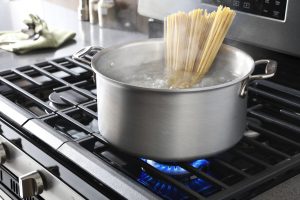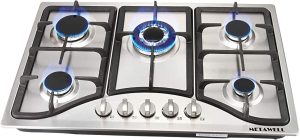Updated on March 12, 2023
How Can I Make My Stove Burner Stronger
Unfortunately, cooking requires a significant investment of both time and energy on the part of the cook. The strength of the gas burner, more than the intricacy of the food, often determines how long it takes to cook: everything boils and fries for longer while using a theoretically weak approach. Increasing the power of the gas burner is very important since it’s far more enjoyable to spend an evening relaxing and unwinding than than slaving away at the stove all day.

These modernization approaches, however, may not be safe. Is it worth it to play gas games to save time? With the use of visual images and relevant video snippets, we’ll go through these hot-button subjects in great depth.
Briefly About the Power of Burners and Stoves
Depending on the number of burners and their instantaneous power as specified in the equipment passport, the working surface’s total power may be calculated. The typical output of a single burner is between 2 and 2.5 kW. This number is sufficient for a pleasant and reasonably rapid heat treatment of items with good gas quality and normal pressure in the line. Regulator limit turn and complete gas supply decide burner maximum power in this situation.
Household hobs frequently come with burners that have varied wattage ratings:
- 0.7-1.2 kW on the small side;
- on the medium – 1.3-1.8 kW;
- at high power, up to and above 4 kW
It’s rational and easy to use a WOK burner to brew coffee in a Turk or to boil a big quantity of water in a small one, since it doesn’t make sense to do either. You may conserve gas and, if the temperature in the room is maintained with air conditioning, electricity, by using a variety of various capacities.
As a result, 8-10 kW is a reasonable measure of the calorific value of the gas utilized by a four-burner stove in the intermediate price range. Models in the lower price range typically have a maximum output of 5-7 kW.
Depending on the kind of cooking surface, a separate chimney or a heavy-duty hood may be required for typical safe operation. Buying such models isn’t always out of the question, however, depending on your living arrangements.
Gas stoves with two or three circuit burners are very common. A strong burner known as a “double or triple crown” produces flames in many rings rather than in a single row. A comparable appliance may help you cook more quickly and evenly.
Gas stove burner
It is essential that you get acquainted with the burner’s construction, as well as the principles of gas supply and combustion, if you want to learn how to boost the flame on a standard domestic gas stove.
The first thing to keep in mind is that the stove burns not simply pure gas, but a gas-air combination. The ultimate composition of the burner, the ratio of gas and air, has a significant impact on the size and efficacy of the fire it produces for the customer.

There are three kinds of burners in burners, each with its own air intake method:
- Diffusion is a typical cooking method. In these buildings, there is no air leak; gas mixing happens spontaneously.
- The pressure in the gas line is used by kinetic burners, allowing you to precisely control the quantity of air that is drawn into the fuel mixture.
- Combined burners are able to use both techniques of adding air to the gas to get the desired result.
These components can be found in the vast majority of domestic gas stoves.
Even though the burner’s design is basic, it’s quite accurate because to the exact calibration.
The nozzle is installed in a nozzle-end pipe. An exact measurement of the diameter of the through hole was made. Gas is sent to the mixer, which then mixes the fuel and air. The combustible mixture exits the mixer and enters the burner, where the flame is generated.
It’s important to pay attention to the space between the nozzle and the mixer in this shot. Fuel and oxygen are combined to the correct proportions when the gas travels through this section of the cylinders. To ensure that the gas burns off entirely and with maximum efficiency, this distance must be carefully determined.

